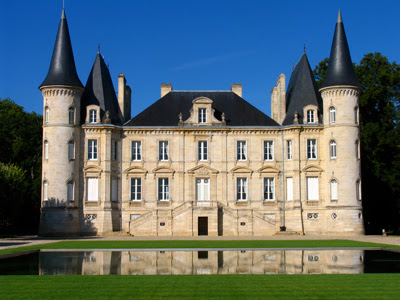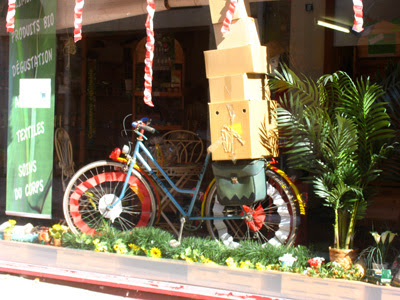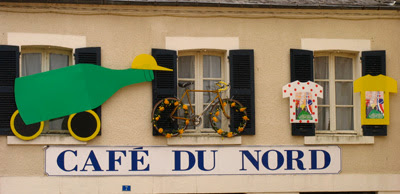Vintage in Muscadet
The INAO has approved the first three Muscadet ‘cru communal’ – Clisson, Le Pallet and Gorges. Others – Mouzillon- Tillières, Château Thébaud, Monnières Saint-Fiacre and Goulaine – are expected to follow soon.
The crus communals have stricter rules than the other Muscadet appellations: permitted yields are only 45 hl/ha, the grapes have to be riper – at least 11%, and the time the wines spend on their lees is much longer. Unfortunately because of this long time spend on the lees the wines are not entitled to use sur lie on the label. The current laws stipulate that to put sur lie on the label the wine must not be bottled before the 1st March following the vintage and not after 30th November.
At their best these Muscadets, often kept on their lees for 36 months are more, can be very fine with depth and complexity. After bottling they will often benefit from further aging.
Edited press release announcing the decision of the INAO:
'L’inao reconnaît les mentions Communales du Muscadet
Clisson, Le Pallet, Gorges
Retenez bien ces noms, ce sont les trois premiers crus communaux du Muscadet. S’appuyant sur des analyses géologiques, pédologiques et organoleptiques très précises, le cahier des charges des trois crus prévoit des rendements limités (45 hectolitres par hectare au lieu de 55 en appellation sous-régionale et 65 en muscadet générique), une entrée en production des vignes au bout de six ans minimum, une maturité des raisins très importante (11 à 12° naturels au moins), un élevage plus long... Bref : les nouveaux venus dans la famille du Muscadet poussent l’excellence à son paroxysme. Ils commencent modestement : à peine une centaine d’hectares, sur les 10 000 que compte l’appellation, et environ 65 producteurs sur 650. Mais ce sont des précurseurs : ces trois crus pourraient être rapidement suivis par Mouzillon- Tillières, Château Thébaud, Monnières Saint-Fiacre, Goulaine... entre autres.
Amorcée dans les années 1990, engagée depuis 2001, la démarche officialise une réalité du terrain. « J’ai toujours vu mes parents vinifier et embouteiller séparément la parcelle qui vient d’être classée en cru : elle faisait l’objet d’une cuvée particulière », témoigne ainsi Laurent Bouchaud, vigneron au Pallet. Cette réalité, tout d’abord géologique, se traduit en effet tout naturellement dans les caractéristiques des vins qui en sont issus.
Construits pour la garde, les crus communaux du Muscadet se savourent dès leur plus jeune âge, mais connaissent aussi la valeur des années. « Bons à marier » dès leur mise en marché, grâce à un élevage sur lie prolongé, ils peuvent également patienter dix, quinze ou vingt ans en cave, pour encore plus de complexité.
Et avec des prix allant de 7,50 à 10 euros, ils constituent pour les amateurs friands de nouveauté, d’originalité et d’excellence, l’offre de grands vins blancs la plus excitante et la plus accessible qui soit.
La confirmation d’une légitimité
par Joël Forgeau, président de l’appellation
« Pour les consommateurs, les crus communaux du Muscadet sont l’assurance d’offrir ou de s’offrir de grands vins de garde, originaux car très rares et encore peu connus, au terroir très précis et clairement identifié. Les crus confirment qu’il y a une vraie légitimité, pour un amateur de grands vins blancs partout dans le monde, à choisir un muscadet.
Pour les vignerons, la création officielle des crus est une reconnaissance de la qualité de nos terroirs. C’est aussi une reconnaissance du travail accompli depuis des années pour mieux les connaître, les analyser et les mettre en valeur. Mais c’est surtout un encouragement, une locomotive pour motiver tous les acteurs du vignoble à poursuivre ce chemin vers l’excellence. Les crus communaux du Muscadet ouvrent la voie à toute l’appellation. »
Clisson
« La petite Venise » repose sur une faille granitique du vieux massif armoricain. Les sols mêlent graviers et galets roulés, favorisant un drainage naturel et une plongée des racines au cœur du terroir. Les vins qui en sont issus nécessitent de longs élevages (24 mois au minimum) pour développer toute la richesse de leurs arômes de fruits confits, de fruits secs et de coing.
Gorges
Situé de part et d’autre de la Sèvre, sur des sols issus de gabbros altérés et d’argiles à quartz, ce cru généralement plus tardif nécessite souvent d’être vendangé après les autres, appréciant particulièrement les belles arrières-saisons. Après plus de deux ans d’élevage sur lie, les vins expriment pleinement leur complexité : finesse, minéralité intense, ainsi qu’une note fumée caractéristique.
Le Pallet
Prenant place sur la rive droite de la Sèvre, ce cru se distingue par un terroir chaud et précoce. Peu profonds et très pierreux, ses sols reposent sur des gneiss (roche métamorphique) et des gabbros peu altérés : un sous-sol suffisamment fracturé pour permettre l’enracinement de la vigne. Les vins exigent un minimum de 17 mois d’élevage afin de révéler une trame aromatique élégante aux nuances fruitées et florales.
Une mosaïque géologique
La faille granitique du massif armoricain est une zone de fracture correspondant au plissement hercynien, datant de l’ère primaire et qui marque ici la séparation de deux entités géologiques : le secteur correspondant au granit de Clisson au sud, et l’entité des gabbros au nord.
Gabbro : appelée localement « roche verte », c’est une roche volcanique formée en profondeur, pauvre en silice et riche en magnésium et en fer. Formant souvent la croûte océanique, les gabbros sont rares en zone continentale.
Les gabbros altérés désignent la décomposition partielle de la roche mère, le gabbro, en une fraction plus fine, notamment sous forme de sable et d’argile. Cela donne des terroirs plus tardifs avec des maturations plus longues et des vins sur la fraîcheur et la minéralité.
Les gabbros peu altérés sont des sols peu profonds reposant sur la roche peu désagrégée, mais suffisamment fracturée pour permettre l’enracinement de la vigne. Ces sont des terroirs plus chauds et précoces, donnant des vins riches et floraux.
L’argile à quartz : ce sol riche en argile présente également une importante quantité de quartz de taille variable (graviers et cailloux) et de nature siliceuse.
Gneiss : roche métamorphique issue ici de la recristallisation des roches volcaniques (granit) au cours des temps géologiques.'
Marie Chartier with Pueri Solis – a potential cru communale from Domaine Pierre Luneau-Papin

















































